The Army is studying a plan to put drill sergeants back in advanced individual training, a move that would mean the end of the service's AIT platoon sergeants. Army Times talked to a number of AIT platoon sergeants and drill sergeants to see what they think.
Sgt. 1st Class Calvin Cunningham
When Cunningham first became an AIT platoon sergeant, he thought his soldiers could benefit from having a drill sergeant around, especially as discipline issues began to crop up.
"But I took on that role, so I didn't need that drill sergeant there," said Cunningham. "Honestly, I think it falls back on the platoon sergeant. If the platoon sergeant is embracing it and taking the job seriously, I don't think there's a need for drill sergeants."
Cunningham, a technical engineering specialist (12T), has been an AIT platoon sergeant with B Company, 169th Engineer Battalion at Fort Leonard Wood, Missouri, for almost two years. He's currently in charge of 67 trainees.
"The biggest and best thing about my job is actually helping soldiers out, setting them up for success, getting in touch with their units before they get there so they're fully functional when they get to their gaining unit," Cunningham said.
Before becoming an AIT platoon sergeant, Cunningham served as an instructor at the schoolhouse. His experience as an instructor helped prepare him for his AIT platoon sergeant assignment, he said.
And as he grew into his role, he became less concerned that he didn't have a hat or badge like drill sergeants do, Cunningham said.
"When soldiers reach back to you and thank you, or their gaining unit e-mails me back and says, 'hey, I appreciate the work you did with the soldier,' that means more to me than a hat or a badge," he said.
He also became less concerned about the lack of special duty assignment pay.
"After talking to some of my drill sergeant counterparts, I didn't realize the amount of time they were spending with these soldiers," he said. "They're with them the whole time."
Cunningham also said he's not sure putting drill sergeants in AIT will work for every course across the Army.
"Every course is set up differently. Our course, for example, is 18 weeks," he said. "The courses vary, the MOSs vary, the type of training varies. I don't think, necessarily, a drill sergeant would benefit or hinder anything. It just goes back to the leader."
Staff Sgt. Jacob Miller
The Army's 2015 Drill Sergeant of the Year, Miller said he can see both sides of the issue. As a drill sergeant for military police one station unit training at Fort Leonard Wood, Miller was with his soldiers for 19 weeks, from basic training through completion of AIT.
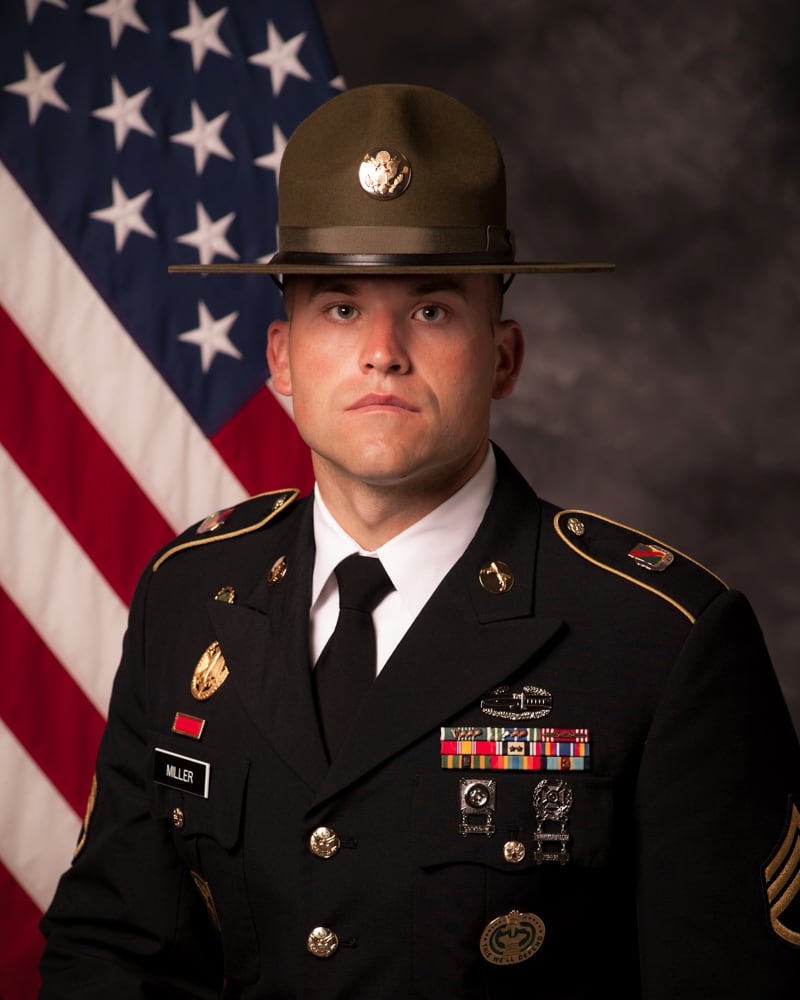
Staff Sgt. Jacob Miller
Photo Credit: DoD
"The hat can make us harder to talk to," Miller said. "With us, we take the time to take the hat off, but you still have certain soldiers where they're still scared and they don't want to talk to us."
Miller said he's not sure if switching to drill sergeants in AIT will be a good or bad thing.
"There's definitely benefits to both," he said.
In his case, Miller said he and his fellow drill sergeants adjusted their demeanor with each phase of training.
"We know when to calm it down and when to bring it up," he said. "It's easier [for us] because we have them for 19 weeks. You can easily identify which ones are lacking because we've been looking at the same soldiers for however many weeks."
Sgt. 1st Class Phillip Schrimsher
Schrimsher, an AIT platoon sergeant with B Battery, 1st Battalion, 78th Field Artillery Regiment, said he doesn't believe putting drill sergeants in AIT will make a huge difference.
"The job is still going to be the same, essentially," he said.

Sgt. 1st Class Phillip Schrimsher is an AIT platoon sergeant at Fort Sill, Okla.
Photo Credit: Army
When asked if drill sergeants, with their distinctive hats and badges, might have a greater impact on young soldiers, Schrimsher, a fire support specialist (13F) soldier assigned to Fort Sill, Oklahoma, disagreed.
"I like to think good leadership isn't tied to an article of clothing," he said. "Good leadership is setting the example and trying to prepare them the best that you can for them to go out into the real Army."
But if the Army were to decide to pay AIT platoon sergeants the extra $300 a month in Special Duty Assignment Pay? "If the Army wants to give us some extra money, I don't think anybody would object," Schrimsher said.
The 13F AIT is nine weeks long, and Schrimsher said he enjoys his job.
"It's personally gratifying whenever you see young soldiers developing and becoming good soldiers," he said.
Sgt. 1st Class Nicole Grigler
An automated logistical specialist (92A) and AIT platoon sergeant in A Battery, 1st Battalion, 78th Field Artillery Regiment, Grigler said she doesn't believe bringing back drill sergeants would change the nature of her job.
"Discipline is a leadership responsibility as well as a leadership challenge," she said. "I think good leaders know how to handle soldiers in different ways. I don't think [bringing back drill sergeants] will make it any different."
For Staff Sgt. Anthony Brown, a cannon crewmember and AIT platoon sergeant in 1st Battalion, 78th Field Artillery Regiment's B Battery, AIT training is fine the way it is.
"The job is the job," he said. "It's all about the leader. The leader's going to be who the leader is. The hat, the badge, and what we wear, it's just the title."
Staff Sgt. Johnny Coats
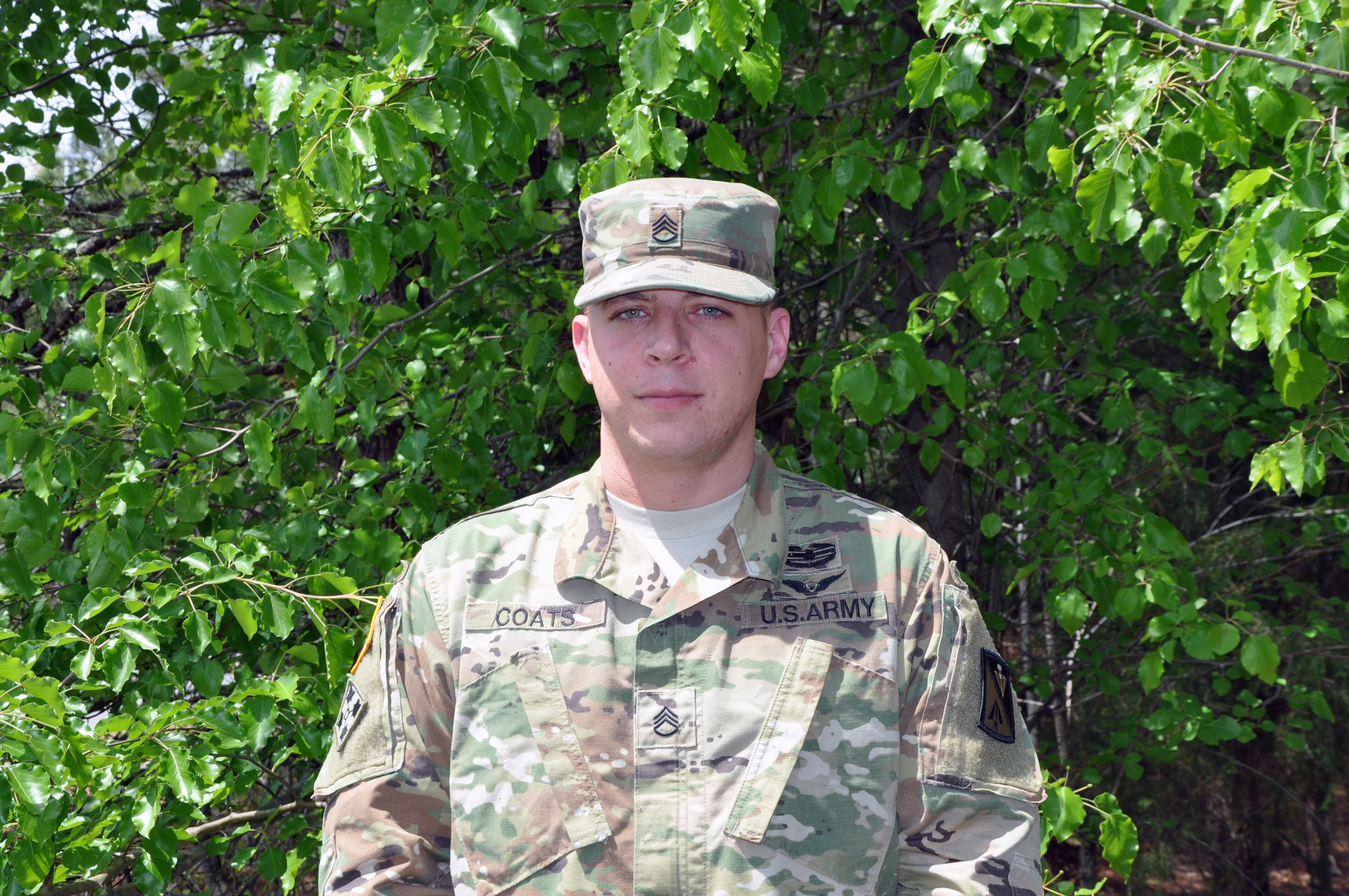
Staff Sgt. Johnny Coats is an AIT platoon sergeant at Joint Base Langley-Eustis, Va.
Photo Credit: Stephanie Slater/Army
Coats is an AIT platoon sergeant with 1st Battalion, 222nd Aviation Regiment at Joint Base Langley-Eustis, Virginia. A UH-60 helicopter repairer (15T), Coats volunteered to be a drill sergeant but was instead assigned to be an AIT platoon sergeant.
He's enjoying his job so much that he recently volunteered to extend his tour for a third year.
"Interacting with the soldiers every day, just helping them out and seeing them develop is very rewarding," Coats said.
Coats said he is not concerned about not having a distinctive hat or badge.
"At the end of the day, it's just an NCO being an NCO," he said. "Like everything else you have good NCOs and you have bad NCOs."
Sgt. 1st Class Bobbie Gabaree
A senior AIT platoon sergeant for 1st Battalion, 222nd Aviation Regiment and an aircraft components repair supervisor (15K), Gabaree said she's on the fence about bringing back drill sergeants to AIT.
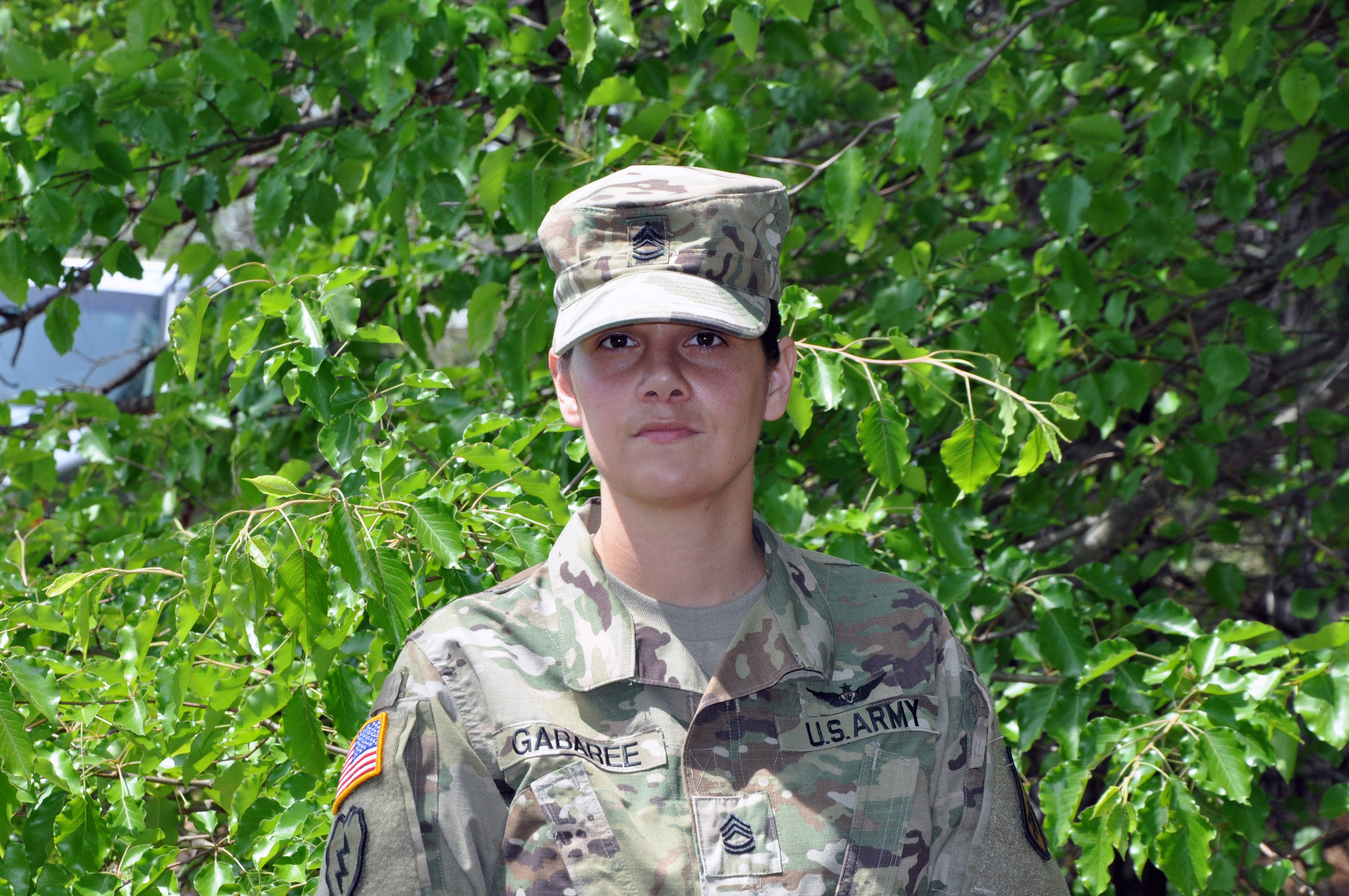
Sgt. 1st Class Bobbie Gabaree is a senior AIT platoon sergeant at Joint Base Langley-Eustis, Va.
Photo Credit: Stephanie Slater/Army
"I've been here for two and a half years doing this job without a hat, without a badge, without [extra] pay," she said. "If the Army brings drill sergeants back, you're going to pay them to do something I've been doing for two and a half years for free."
Gabaree said AIT platoon sergeants are probably less intimidating than drill sergeants.
She recounted a recent incident outside the Post Exchange, when she saw three young soldiers on their personal time, dressed in civilian clothes.
"I watched three drill sergeants walking from the parking lot towards the PX, and I watched these three soldiers, on their personal time, hide their cell phones from the drill sergeants," she said. "The drill sergeants didn't say anything to them, they just happened to glance their way, and those soldiers didn't know what to do. There was instantaneous fear."
The issue of bringing drill sergeants back to AIT is a popular discussion topic among AIT platoon sergeants on Facebook, Gabaree said.
"I disagree that we need [extra] pay, we need a badge or a hat to associate with the fact that I'm doing a job," she said. "I already get paid, I already have rank, I already have a title. I don't necessarily think that I need that kind of recognition from anybody up above me to tell me I've done a great job. I get it from soldiers every day. That's enough for me."
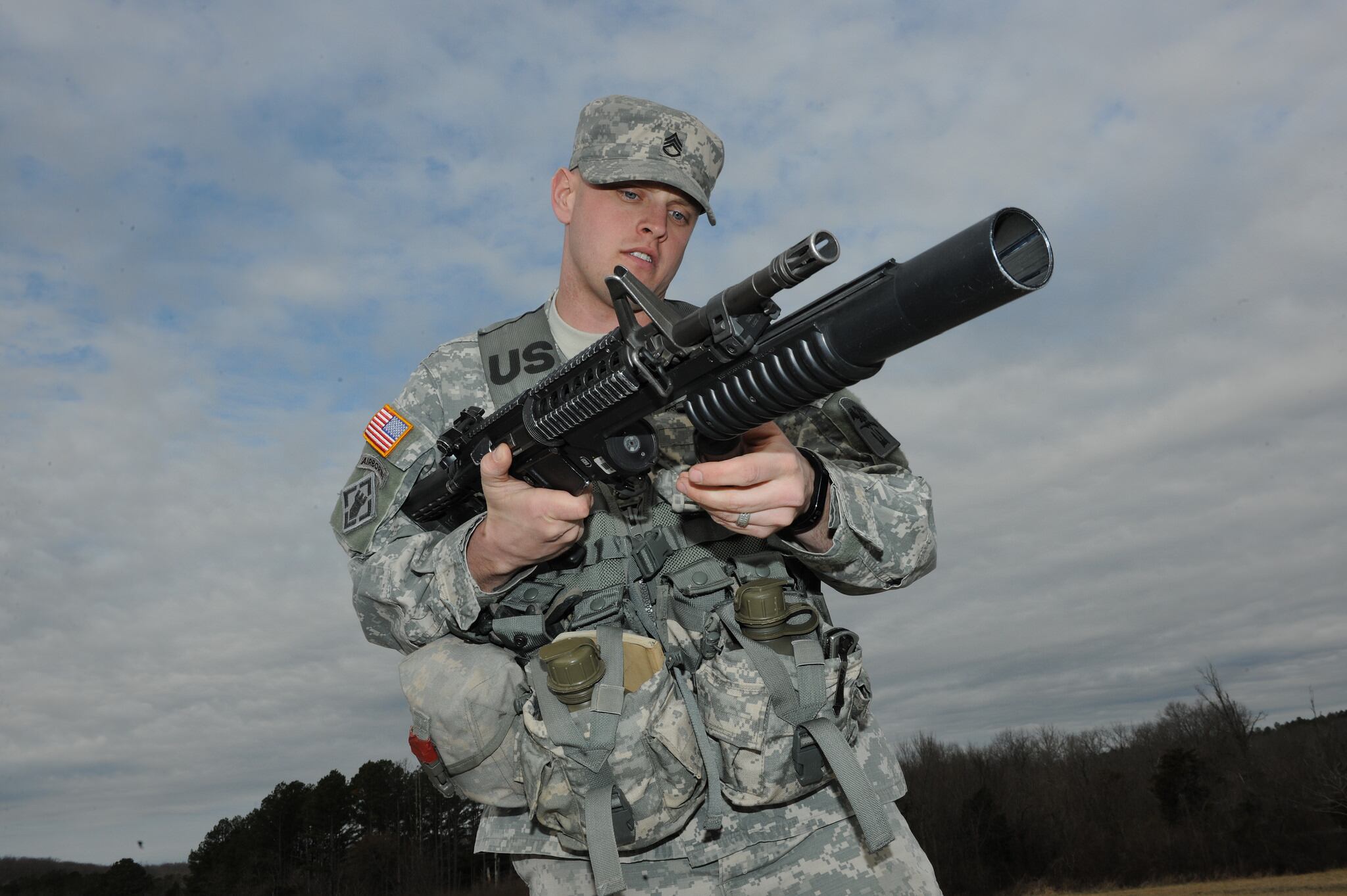
Staff Sgt. Eric Ross, an AIT platoon sergeant at Fort Leonard Wood, Mo., goes over unloading procedures for the M203 grenade launcher during the 2015 Maneuver Support Center of Excellence and Fort Leonard Wood Best Warrior Competition.
Photo Credit: Fort Leonard Wood
Staff Sgt. Eric Ross
Ross, a technical engineer (12T), said his job as an AIT platoon sergeant with the 1st Engineer Brigade at Fort Leonard Wood gives him the chance to influence new soldiers.
"I get to influence the soldiers I work with in the future," he said. "I want to make sure I'm putting quality out there."
At the same time, Ross, a married father of two who has been in the Army almost 11 years, said the job of an AIT platoon sergeant is time-consuming, especially as his classes can range in size from 35 to 60 soldiers.
"It's very tough to find time," he said, adding that he and his fellow AIT platoon sergeants take turns to work weekends so everyone gets a chance for some time off whenever possible.
Ross said he's "indifferent" about whether the Army will decide to replace AIT platoon sergeants with drill sergeants.
"I don't think it's going to make the desired result they're looking for, but the [drill sergeant] hat and the badge are iconic, soldiers can associate it with being in charge," he said. "That's what they've had from basic training all the way until they graduated. That immediate recognition of authority is there."
Being an AIT platoon sergeant has taught him the importance of having face time with soldiers, Ross said.
"Actually being out there with them pays dividends in the long run in terms of gaining their respect," he said. "If you just give orders and you walk away, that respect and admiration is not always there, especially with new, young soldiers."
Sgt. 1st Class Samuel Enriquez
Enriquez, a combat medic and the 2015 AIT Platoon Sergeant of the Year, said he has mixed feelings about putting drill sergeants in AIT.
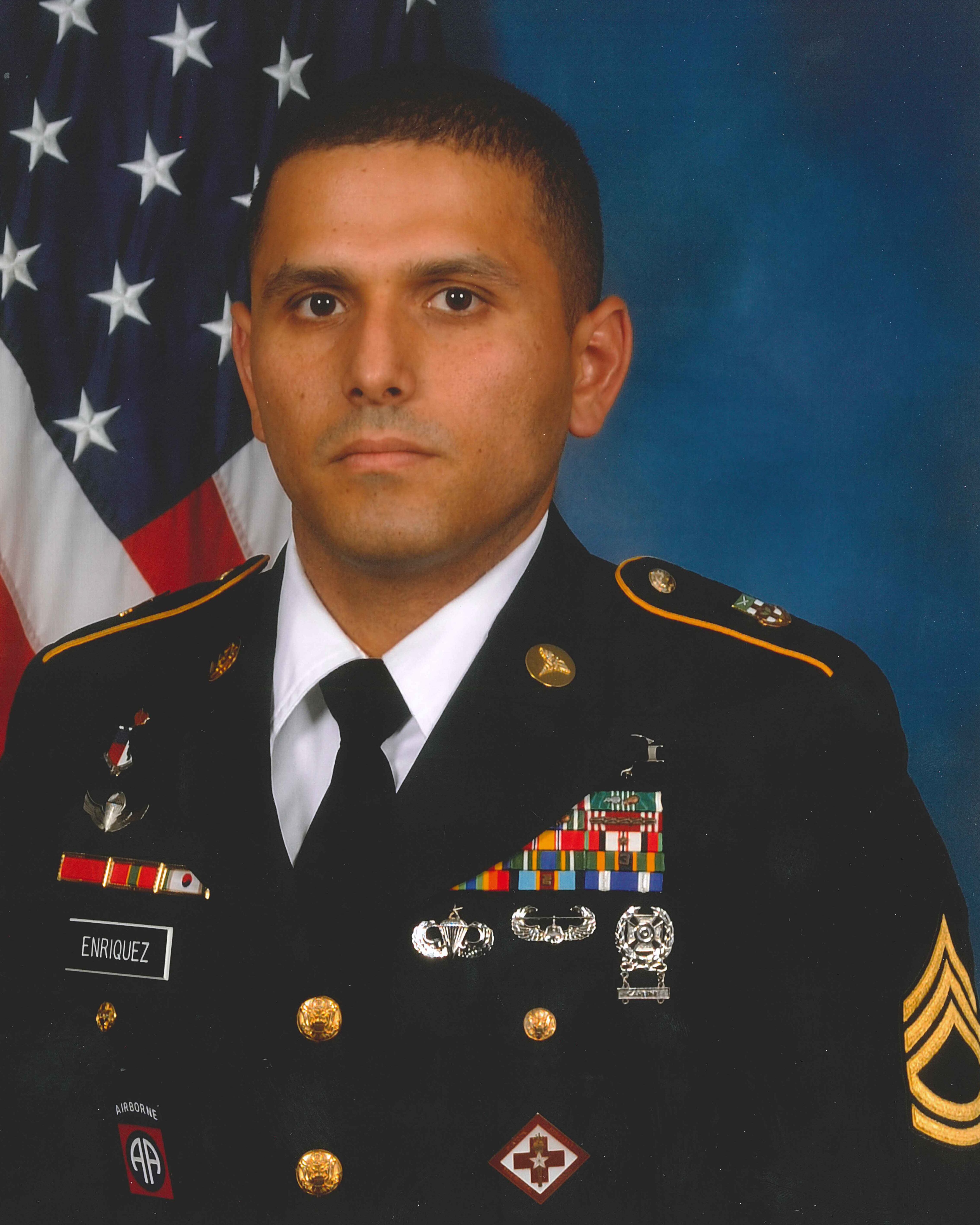
Sgt. 1st Class Samuel Enriquez
Photo Credit: DoD
Drill sergeants, with their distinctive campaign hats, bring with them an instant recognition, Enriquez said.
"The extra pay doesn't hurt, either," he said. "But at the same time, it's not a cheap conversion. It's pretty costly."
Enriquez spent 11 months as an AIT platoon sergeant at Joint Base San Antonio-Fort Sam Houston, Texas, before moving to the Center for Initial Military Training.
On the job, he was surprised by how many soldiers would come to him for advice, he said.
"When you get to AIT, things get a little bit different," he said.
Another concern Enriquez said he has is manning.
"Some AITs get really crowded," he said.
Army guidelines call for one drill sergeant for every 17 trainees, and one AIT platoon sergeant for every 40 students. Making the switch to drill sergeants in AIT could mean a need for more personnel, he said.
"The requirements [for both jobs] are very similar, except AIT platoon sergeants must be staff sergeants with two years' time in grade or sergeant first class," he said. "The pool gets a little bit smaller then."
But Enriquez said he also appreciates the Army trying to better recognize the efforts of AIT platoon sergeants.
"As an AIT platoon sergeant, I spend more time with my soldiers than my family, but I'm more of a manager dealing with different aspects of the soldier's life, while the drill sergeant will be dealing more with the soldier's training," he said.
He believes that, given the opportunity, many AIT platoon sergeants would be glad to wear the drill sergeant badge, but at the same time, a badge isn't what most soldiers seek.
"In the end, it's not whether you wear a badge, it's not whether you wear a hat, it's not whether you get the extra pay, the NCOs are going to get the job done," he said. "If they're getting the recognition they deserve, great. I know they'll appreciate it. I tremendously respect drill sergeants, but I take pride in being an AIT platoon sergeant and being different."
Michelle Tan is the editor of Army Times and Air Force Times. She has covered the military for Military Times since 2005, and has embedded with U.S. troops in Iraq, Afghanistan, Kuwait, Haiti, Gabon and the Horn of Africa.




